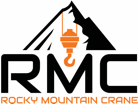Tower Crane Frequently Asked Questions
1.What are the power requirements of the crane?
Our cranes require 240 volts of single-phase power for the smaller cranes, and 480 volts of three phase power for the larger ones. We can help you identify the power requirements you need based upon the crane that best fits your job, and we can provide generators or phase converters to insure proper power
2.Do you provide operators for your cranes?
We rent bare cranes, which means we do not provide operators. We offer training and can help your employee to become nationally certified by the NCCCO. If that isn’t the best solution for you, we work with a few different companies that offer operators, and we can make a recommendation for the best fit for your jobsite.
3.How can I determine which crane is right for my job?
We can take your site plan and provide you with a drawing showing our crane on your site, to insure proper coverage. We work closely with you to make sure the crane we choose has the capacity to be the complete lifting solution
4.How do your cranes compare to a mobile crane?
We have found that our cranes are more cost effective in comparison to mobile cranes, when a mobile crane is being used for 3 weeks and longer. Typically, a mobile crane is being billed whether it is lifting or sitting idle on the jobsite. Our tower cranes are a flat rental rate.
5.What maintenance is required for the cranes?
We have added automatic greasers to lube the bearings for all motors. This coupled with extreme service bearings ensure that the crane will work smoothly every time. We do follow up with the crane at the site at regular intervals to make sure everything is operating correctly.
6.I’m working near adjacent buildings or obstacles; how can I make sure to stay away from those obstacles?
Our Potain cranes have the latest computer-controlled systems that can be programmed to avoid obstacles specific to your jobsite. With the electronic limiters, the crane knows where it is in relation to your jobsite and what to avoid. This is especially helpful around power lines that require the crane to maintain a certain distance away.
7.What does mobilization cost?
We evaluate your jobsite and quote mobilization based upon several factors including, distance to jobsite, mobility at the jobsite, lane closures, and set up time. Just to name a few. Our mobilization fee includes demobilization as well. It is determined at the time of the initial quote, there are no surprises later
8.I have a very tight job site that won’t allow a semi-truck to get in, how can you get a crane on my site?
We have the right solution for this, it’s called the Gapo! Its essentially a hydraulic tug that attaches to the crane and with its 0-degree turning radius, and steerable axles, we can get the crane just about anywhere. We even have lifting plans to crane our cranes onto a PT deck or elevated foundation.
9.Who erects your cranes?
The crew at Rocky Mountain Crane is factory trained by Potain to erect all models we offer. Each model requires a weeklong training session and we are certified erection specialists.
10.As a general contractor, I require lifting to be handled by the trades. Why should I rent a crane?
We find that the crane becomes the quarterback of the team. It directs flow of the jobsite and all trades end up using it. From a simple lift to move material to setting wall panels and roof top units, everyone can benefit from it. As the GC, you call the plays to make sure your team wins.
